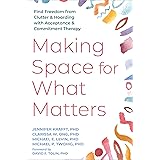Imagine setting a significant goal. Perhaps a new career path, a fitness milestone, or mastering a complex skill. You dedicate hours to visualizing success. You meticulously craft a vibrant vision board. You feel a rush of excitement and accomplishment. But then, days turn into weeks. The initial spark wanes. Taking the first real step feels surprisingly difficult. Why does this common approach often fall short?
The accompanying video, featuring Dr. Emily Balcetis and Dr. Andrew Huberman, delves into the science of goal setting. It challenges conventional wisdom. They explore why certain popular strategies, while initially motivating, might actually hinder true progress. Understanding the physiological and psychological nuances of motivation is key. We must move beyond mere aspiration.
The Paradox of Vision Boards: Goal Satisfaction Without Action
Many individuals embrace vision boards. These visual representations outline future desires. They often involve images and affirmations. The aim is to inspire and motivate daily. This tactic is widely popular. It helps people define their aspirations. Knowing what you want is an accomplishment. It provides clarity. It can be a powerful initial step.
However, this strategy may not drive actual goal achievement. Researchers at New York University, led by Gabrielle Oettingen, have explored this phenomenon. Their findings are quite revealing. Merely visualizing future success can create a sense of premature accomplishment. The brain might perceive the goal as already satisfied. This imaginary experience can be very positive. It provides a significant psychological reward.
Physiological markers support this. Studies have measured systolic blood pressure. This metric indicates the body’s readiness for action. Oettingen’s team observed a decrease in systolic blood pressure. This occurred in individuals visualizing their ideal future. Lower blood pressure suggests relaxation. It implies a state of rest. It signals the body is “chilling out.”
This physiological response is counterproductive. Readiness for action requires elevated systolic blood pressure. This applies to physical tasks. It also applies to mental challenges. Therefore, the very act of vivid visualization can disarm our motivational systems. It leaves us without the physiological resources needed to begin. The initial burst of enthusiasm dissipates quickly. The body is not primed for effort.
Dopamine’s Role in Premature Reward
The brain’s dopamine circuits are also involved. Dopamine is crucial for motivation. It drives us toward rewards. Verbalizing goals can provide an immediate dopamine hit. Imagine telling friends about your big plans. They offer praise and encouragement. This feedback feels good. It delivers a rush of satisfaction. It acts as a reward. This reward is received without any actual work. It is a powerful disincentive to act.
A cardiologist friend observed this phenomenon. Book authors often share their intentions. They receive immediate validation. “Oh, you must write that book!” people exclaim. This positive reinforcement can be enough. The brain registers it as a success. The motivation to actually write the book diminishes. The tangible effort then seems less appealing. The risk of criticism also vanishes. This protects the ego. The project remains an idea. It never becomes a reality.
This dopamine “trick” can derail many endeavors. It highlights a critical distinction. Articulating a goal differs from executing it. The brain needs to associate dopamine with the *effort* of pursuit. It should not be linked solely to the *idea* of achievement. This reframes our understanding of motivation. It moves us toward more effective strategies.
Beyond Aspiration: Strategic Planning and Obstacle Anticipation
Effective goal setting requires more than defining the destination. It demands a robust roadmap. This roadmap must account for practicalities. It also must anticipate challenges. A multi-stage approach is essential for true success.
Breaking Down the Grand Vision
The first step involves deconstructing large goals. A ten-year vision is inspiring. However, it needs immediate actionability. Break it into manageable, short-term objectives. Consider a two-week plan. What can be accomplished in the next two weeks? What comes after that? This creates a clear trajectory. It provides concrete steps. These steps feel less daunting. They foster a sense of continuous progress. Imagine if a startup founder only visualized a unicorn valuation. Without incremental product development, user acquisition, and funding rounds, the vision remains a fantasy. Small, consistent wins build momentum.
The Overlooked Power of Obstacle Pre-Mortem
Gabrielle Oettingen’s research highlights a third, often ignored stage. This involves identifying potential obstacles. Think about what might stand in your way. How might you fail? This seems counterintuitive. Many believe it will dampen motivation. However, the opposite is true. Planning for difficulties actually boosts motivation. It prepares the mind for resilience.
This is not about dwelling on negativity. It is about strategic foresight. Imagine a complex software project. Developers don’t just envision a perfect launch. They identify potential bugs. They plan for server overloads. They anticipate compatibility issues. This proactive problem-solving is critical. It builds robustness into the process. It is a form of contingency planning.
Consider a hypothetical scenario. You are embarking on a significant career transition. You’ve identified your target role. You’ve outlined your skill gaps. Now, identify potential roadblocks. What if you don’t get the first interview? What if a crucial training course is full? What if financial constraints emerge? Having “Plan B” or “Plan C” in place is invaluable. This is not defeatist thinking. It is pragmatic preparation. When challenges arise, you are ready. You avoid panic. You make informed decisions. This preserves valuable mental resources. It keeps you on track. Crisis mode thinking is often suboptimal. Pre-planning mitigates this risk.
This systematic approach builds mental fortitude. It ensures physiological readiness. You are not caught off guard. You possess the resources to navigate setbacks. This cultivates a resilient mindset. It transforms challenges into solvable problems. It reinforces commitment. This scientific understanding truly redefines effective goal setting.








